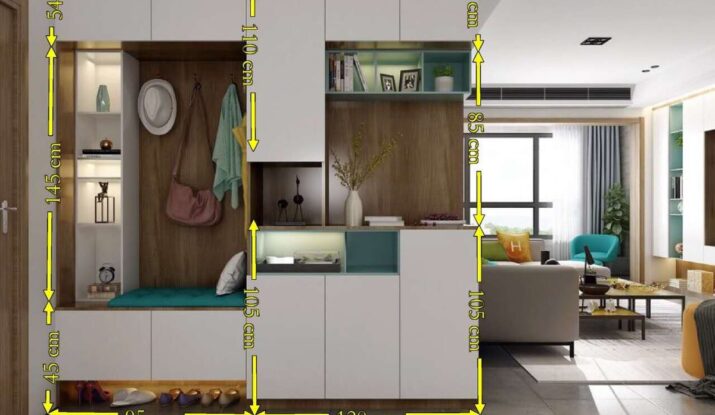Kitchen remodeling should be exciting, not stressful. But we know that figuring out how to calculate square feet of cabinets can feel daunting. What if you measure wrong? What if your beautiful new kitchen cabinets don’t fit? Take a deep breath – at Dr. Cabinet, we’ve helped thousands of homeowners like you measure kitchen cabinets with confidence.
Here’s the truth: with just a tape measure and our simple guide, you’ll get accurate measurements for your upper cabinets, lower cabinets, and even tricky spaces like islands. We’ll walk you through:
- How to measure the length and width properly
- Converting those numbers to total square footage
- Accounting for appliances and available space
- Avoiding those costly mistakes we see all too often
Whether you’re planning a full kitchen remodel or just replacing some base cabinets, knowing how to calculate square feet of cabinets right is the foundation for success. Our step-by-step method makes it easy – no advanced math or fancy tools required.
Ready to create your dream kitchen? Let’s grab that measuring tape and get started!
Why Properly Measuring Square Footage Matters
Nothing ruins a kitchen remodel faster than cabinets that don’t fit. That’s why the knowledge of how to calculate square feet of cabinets correctly makes all the difference. Here’s what proper measurements do for your project when you know how much space you have:
The Perfect Fit
You’ll avoid the nightmare of cabinets that don’t line up with your appliances or countertops. When you measure carefully, everything slots together like pieces of a puzzle – no awkward gaps or last-minute adjustments needed.
Budget Without Surprises
Knowing your exact square footage means you can:
- Get accurate quotes for cabinetry
- Buy the right amount of materials
- Avoid wasting money on incorrect orders
No more guessing games with your renovation budget.
Smarter Storage Solutions
Precise measurements let you maximize every inch. You’ll be able to:
- Plan cabinet layouts that actually work for your space
- Include clever storage solutions
- Create a kitchen that’s as functional as it is beautiful
At Dr. Cabinet, we’ve seen how good measurements transform stressful remodels into smooth projects. We know exactly how to calculate square feet of cabinets because it’s worth taking that extra time with your tape measure now to save headaches later.
The Essential Tools for How to Calculate Square Feet of Cabinets
Before you start measuring, let’s gather the right tools. Having the proper gear makes all the difference between “close enough” and “perfect fit.” Here’s what you’ll need:
A Trusty Tape Measure
This is your MVP for getting precise measurements. Look for one that locks in place so you don’t have to wrestle with it while jotting down numbers.
Pencil and Paper (or a Notepad App)
Sketching a quick layout helps visualize your space, and writing down measurements ensures you don’t forget a single detail. Pro tip: Label each measurement clearly (e.g., “left wall, upper cabinet—24 inches”).
Calculator
You’ll be converting inches to feet and tallying up totals, so a calculator saves time (and prevents math mishaps). Your phone’s calculator works perfectly!
Online Kitchen Design Tools (Optional but Helpful)
If you love tech, tools like our Dr. Cabinet recommended planners let you input measurements and experiment with layouts before committing. Great for double-checking your work!
That’s it—no fancy equipment required. With just these basics, you’re ready to measure like a pro because now you know it how to calculate square feet of cabinets precisely.
Step 1: Measure Your Kitchen Space
Ready to break out the tape measure? Let’s start with the basics – getting your kitchen’s overall dimensions. Here’s how we do it at Dr. Cabinet:
- Wall-to-Wall Measurements
- Start with the longest wall: measure its full length in inches (from corner to corner)
- Then measure the adjacent wall the same way
- Convert to feet by dividing each measurement by 12
Example: A 144-inch wall = 12 feet
- Obstacle Course
Now identify and measure around:- Doors and windows (including their trim)
- Permanent fixtures like islands or peninsulas
- Appliances that won’t be moved (refrigerator, range)
- Reach for the Ceiling
- Measure from floor to ceiling in multiple spots
- Note any variations (old homes often have slightly uneven ceilings)
- Do the Math
Multiply your length × width to get the total square footage
Bonus: This number helps when shopping for flooring, too!
Pro Tip:
Take photos of each wall and jot measurements directly on them using your phone’s markup tool. It’s a game-changer for visualizing later!
Step 2: Measure Kitchen Cabinets
Top Cabinets (Wall Cabinets)
- Measure length, width, and depth.
- Account for doors and handles.
- Calculate square footage per cabinet (L × W).
Lower Cabinets (Base Cabinets)
- Standard kitchen cabinet widths are 12 to 36 inches, depth (24 inches), and height (34.5–36 inches).
- Include drawers and doors in measurements.
- Sum up the total square feet.
Linear Feet Measurement vs. Square Feet
- Measure linear feet (useful for pricing).
- Total linear footage (sum of all cabinet lengths).
- Converting linear feet to square feet (when needed).
Step 3: Calculate Total Square Feet
- Multiply length × width for each cabinet.
- Add upper + lower + base cabinets.
- Include island (if applicable).
- Divide by 144 to convert inches² to square feet.
Step 4: Double-Check for Accuracy
- Re-measure to avoid costly mistakes.
- Verify total surface area of all cabinets.
- Cross-reference with kitchen design layout.
Don’t Make These Common Measuring Mistakes While Calculating Square Footage
We get it – when you’re excited about a kitchen remodel, it’s easy to rush through measurements. But these little oversights can lead to big headaches (and expensive fixes) later. Here are the top mistakes we see – and how to avoid them for perfect calculation and to avoid heavy costs:
- “It’ll Fit” Wishful Thinking
That gorgeous range or dishwasher needs breathing room! Always measure:- The appliance itself
- The clearance space around it
- How cabinet doors will open nearby
- The Window/Door Blind Spot
Nothing ruins a cabinet installation like realizing it blocks a window or door. Always:- Note where windows and doors are placed
- Measure how they swing open
- Account for trim and molding
- The Depth Dilemma
Standard cabinets are 24″ deep, but:- Average upper cabinets are often shallower (12-15″)
- Corners and specialty cabinets vary
- Don’t forget to include door thickness!
Pro Tip from Dr.Cabinet:
After measuring, walk through your kitchen pretending to use everything. Open imaginary cabinet doors, “load” the dishwasher, “reach” for top shelves. This reality check often reveals what numbers alone might miss. This shows you the right way of how to calculate square feet of cabinets as well.
Final Tips from Dr.Cabinet
You’ve got your measurements down – now let’s make sure your kitchen turns out even better than you imagined! Here are our pro recommendations for nailing the final details:
- See It Before You Build It
Free tools like Kitchen Planner or HomeByMe let you:- Input your exact measurements
- Play with cabinet arrangements in 3D
- Spot potential issues before installation
- When to Call in the Pros
If your kitchen has:- Odd angles or unusual spaces
- Structural elements to work around
- Complex storage needs
…it’s worth a quick consultation. We’re always happy to help!
- Future-Proof Your Design
Leave some “flex space” for:- That air fryer you’ll inevitably buy
- Extra pantry storage
- Future appliance upgrades
Remember: The best kitchens balance beautiful design with real-life functionality. A little extra planning now means years of happy cooking later!
Your Cabinet Measurement Questions – Answered!
Q: What’s the easiest way to measure cabinet square footage?
A: Get your tape measure and record length and width of each cabinet in inches. Apply the formula to get square footage; multiply and divide by 144 (For example: 36″ x 24″ = 864 ÷ 144 = 6 sq ft)
Q: What do linear feet and square feet mean?
A: Great question! Linear feet (total length) helps with pricing, while square feet (length x width) tells you how much material you’ll need. You’ll use both during your kitchen remodel.
Q: Does my kitchen island count in the measurements?
A: Absolutely! Treat it like any other cabinet – measure its length and width separately, calculate its square footage, and add it to your totals. Pro tip: Don’t forget to account for overhangs if your island has seating!
Q: How should I handle appliances in my layout?
A: Always measure your fridge, range, and dishwasher spaces first. Mark these areas clearly on your sketch so you don’t accidentally plan cabinets where appliances need to go. Leave some extra breathing room too – appliances need proper clearance.
Q: Is being off by an inch or two really that big of a deal?
A: Unfortunately, yes! Just a small measuring mistake can mean:
Cabinet doors that won’t open fully
Gaps between units
Wasted money on incorrect orders
That’s why we always recommend measuring twice (or even three times!)
Still have questions? Our kitchen experts at Dr. Cabinet are happy to review your measurements – just reach out!
Conclusion
Getting your cabinet square footage right is the make-or-break step in kitchen design. When you learn how to calculate square feet of cabinets accurately, you’re setting up your entire kitchen remodel for success. At Dr. Cabinet, we’ve seen how proper measurements transform stressful renovations into smooth projects.
Taking careful measurements with your tape measure ensures every element fits perfectly – from your upper cabinets to lower cabinets and any specialty units. Whether you’re working with standard base cabinets, wall-mounted units, or incorporating an island, calculating total square footage prevents costly mistakes. The additional effort of measuring all dimensions accurately leads to the perfect execution of your dream kitchen design.
Consider all accessible space in your kitchen design while establishing necessary clearances for appliances such as refrigerators and dishwashers. Accurate linear feet measurement matters just as much as square footage when planning your cabinet layout. Our team at Dr. Cabinet always recommends double-checking your numbers – it’s much easier to fix measurement errors on paper than during installation.
Have questions about your measurements? The experts at Dr.Cabinet are always happy to help.




